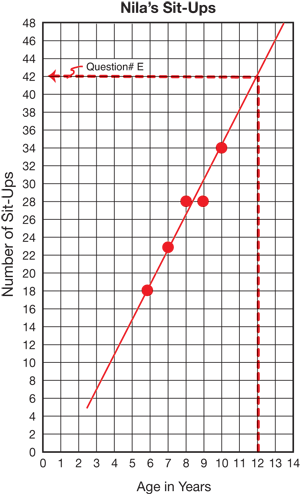D. Using Best-Fit Lines 


Each year, Mrs. Welch, a gym teacher at Bessie Coleman School, records the number of sit-ups each student can do. Nila used her data to make a graph which shows the number of sit-ups she could do each year.

- Describe the graph.
- If you read the graph from left to right, do the points go uphill or downhill?
- What does the graph tell you about the number of sit-ups Nila can do?
- Do the points lie close to a straight line? If so, use a ruler to draw a best-fit line.
- If possible, predict the number of sit-ups Nila will be able to do when she is 12.
- Does knowing Nila's age help you predict the number of sit-ups she can do?












